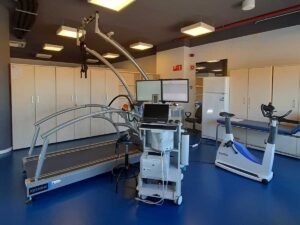Introduction
Several studies have shown that WB-EMS has favorable effects in terms of body composition. Also, with respect to abdominal body fat central predictor of metabolic and coronary diseases, it was impressive how WB-EMS rapidly and significantly decreases this risk factor.
The purpose of this study was to determine the effect of WB-EMS with low intensity exercises if it produces a significant increase in energy expenditure.
Method
19 healthy young men were assigned for this study. The pre-test protocol was to maintain your usual lifestyle and nutrition and not exercise 48 hours before the test. The 19 subjects performed two tests one without WB-EMS and one with WB-EMS.
The WB-EMS protocol was intermittently using a frequency of 85 Hz with a duty cycle of 4 seconds and 4 seconds of rest at the maximum tolerance limit of the subjects. A low session duration and low load training strategy was applied.
Results
The energy expenditure was 17% higher during the year with the application of WB-EMS compared to the group without WB-EMS. The intensity measurement during exercise was higher with WB-EMS than without WB-EMS using the Borg scale.
Conclusion
Although the study determined a significant effect of WB-EMS during the exercise of low intensity dynamic resistance in energy expenditure. The results were not as expected as a greater energy expenditure (three times greater) was expected. The reason for this may be due to the inability of indirect calorimetry to properly assess energy expenditure.
Bibliography
Wolfgang Kemmler., Simon Von Stengel., Johannes Schawarz.and Jerry L. Mayhew. Effect of Whole-Body Electromyostimulation on Energy Expenditure during exercise. (2012) Journal of Strength and Conditioning Research. 26(1)/240–245.







